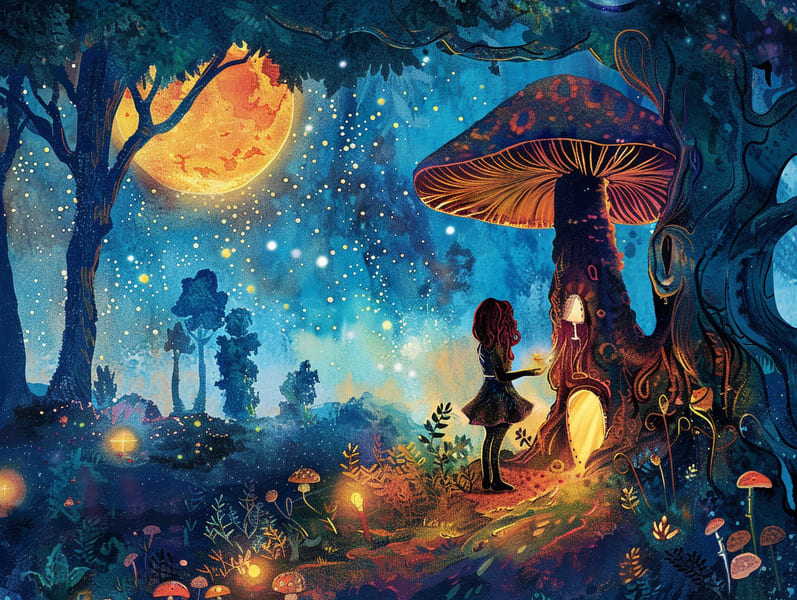The Dawn of Historical Fairy Tales and the Everlasting Grace.
The Dawn of Historical Fairy Tales and the Everlasting Grace.
Blog Article

Popular fairy tales have historical significance. These narratives have been told from one generation to the next long before they were ever published. They were born from a variety of cultures, including African traditions. They were initially disseminated among older generations, often carrying themes and messages relevant to the societal norms and beliefs of the time.
The Grimm brothers, Jacob and Wilhelm, were among the first to compile and publish many of these beloved fairy tales. Their compilation, "Grimm's Story Collection," included stories like "The Story of Cinderella," "The Bread Crumb Trail," and "Little Snow White," which have since become hallmarks in the world of iconic fairy tales. Similarly, Andersen's delightful narratives, such as "The Mermaid," and "The Duckling's Story," have enchanted hearts worldwide, guaranteeing their place in the pantheon of iconic fairy tales.
Despite their age, traditional fairy tales remain as significant as ever, especially as nighttime stories for kids. These charming stories are now available in various formats, including colorful picture books, charming animations, and internet fairy tales.
Their lasting presence can be ascribed to several captivating elements:
Life Lessons: Traditional fairy tales often offer important moral lessons. Fairy tales like "The Boy Who Cried Wolf" teach the virtue of being truthful, while "The Race of the Tortoise and the Hare" underline the qualities of persistence and unpretentiousness. These stories offer young readers clear distinctions between truth and falsehood, guiding their moral compass in a soft yet significant way.
Sympathy and Perception: Timeless fairy tales frequently portray beings facing challenges and problems, prompting kids to comprehend with their struggles and celebrate their triumphs. For instance, "The Story of Beauty and the Beast" emphasizes the benefit of seeing beyond the surface to know the true being of a person, strengthening tenderness and knowledge.
Cultural Appreciation: Many timeless fairy tales are steeped in the cultural contexts from which they blossomed. Reading these tales can provide intriguing perspectives into different social structures, promoting a sense of cultural respect and recognition.
Imagination and Creativity: The extraordinary elements in traditional fairy tales—magical kingdoms—fire up children’s imaginations. These fairy tales guide readers to fantasy realms, awakening innovative ideas and a sense of marvel that endures a lifetime.
Timeless fairy tales are not only spellbinding but also enlightening. They provide alluring tools in advancing various cognitive and affective skills in young readers. When classic fairy tales are recited, they cultivate language skills by offering new lexicon and detailed sentence structures. This practice also boosts listening abilities and mental focus, as young readers follow the story, enthusiastic to see what happens next.
Furthermore, analyzing the themes and characters of old fairy tales can strengthen intellectual skills and logical thinking. Little ones are taught to pinpoint patterns, foresee events, and understand cause and effect. These contemplations also further children verbalize their thoughts and feelings, contributing to their emotional intelligence.
In today’s technological era, the existence of online fairy tales has made these tales more available than ever. Internet sites and applications share large libraries of ancient fairy tales that can be viewed or played anytime, anywhere. Fairy tales spoken are particularly liked, making available an immersive method for young ones to savor these charming tales. Sound books and read-to-me videos bring characters and settings to life, often joined by captivating soundtracks and background music that improve the narrative adventure.
The timeless fascination of classic fairy tales lies in their ability to adapt to modern days while retaining their core values. Contemporary versions of these tales often introduce more multicultural protagonists and modern settings, making them accessible to today’s audience. However, the essential messages of fearlessness, warmth, and truth remain unchanged, continuing to reach children of all ages.
Old fairy tales also offer a sense of peace and familiarity. They render a systematic narrative with a definite beginning, middle, and end, often finishing with the settlement of conflicts and the triumph of virtue over vice. This certainty can be solacing for little ones, sharing a sense of stability in an variable world.
Traditional fairy tales continue to enthrall and teach new generations, maintaining their loveliness and pertinence in modern society. As bedtime stories for kids, they share a perfect blend of allure and teaching, encouraging moral values, empathy, and creativity. The abundance of online storybooks and the widespread nature of fairy tales told out loud certify that these ancient fairy tales remain reachable to new generations.
By maintaining and passing on these narratives, we continue to treasure the rich tapestry of myths and cultural heritage. Whether you are viewing a vividly illustrated book, experiencing a virtual collection, or listening through an narrated book, the charm of classic fairy these guys tales is always within reach. These fairy tales highlight of the consistent spell of narratives and its ability to unite us across generations and cultures.
Even if you are delving into a colorful picture book, delving into a electronic library, or listening on an voice book, the magic of famous fairy tales is always within reach.
These tales remind us of the unceasing power of tales and its ability to gather us across eras and regions, forming a connection that delights and instructs alike.